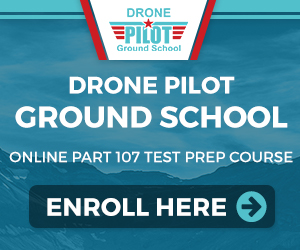Drones For Commercial Use
Businesses intending to use unmanned aerial systems will also need permission from the FAA. The FAA currently grants the use of drones for commercial purposes on a case-by-case basis. Businesses can either apply for exemption or use their drone after registration and in compliance with the safety guidelines listed below.
Commercial use of drones includes activities such as the sale of images and video taken by a drone, and any professional or contract services undertaken using unmanned aerial systems.
Drone Use Safety Guidelines
The following drone use safety guidelines were created as recommendations for recreational users but can also be applied to commercial or public entity use. The FAA recommends that all drone users follow community-based guidelines such as the ones developed by organisations like the Academy of Model Aeronautics.
UAS pilots must be proficient and competent in the operation of their drone.
Drone users will also need to ensure that their unmanned aerial systems fly below 400 feet and remain in sight at all times.
Unmanned aerial systems must avoid and be flown well clear of manned aircraft. Airport control must be notified before the use of a drone within 5 miles of an airport.
Areas with Helipads must also be avoided and no flying must be undertaken during poor weather conditions.
Important public infrastructure such as government facilities, busy roads, power stations, correctional facilities and others must be avoided during flight.
As with other manned vehicles, pilots must not fly drones while under the influence of drugs or alcohol.
Drones cannot be flown over moving vehicles or unprotected individuals, with a recommendation of staying at least 25 feet away from property or people at risk.
If using the drone for photographic purposes, owners must ensure that no images are captured without permission of individuals in the vicinity.
Drone users must be careful with drone use in remote areas such as rural settlements or agricultural regions as there may be low-flying manned aircraft nearby. The same applies to services such as emergency medical, wildlife, law enforcement and firefighting operators who are liable to be working in low-level airspace.
Conclusion
These guidelines are only just recommendations but there are already rules in place for drone use. In addition to these guidelines, it is also important to remember that non compliance could lead to possible fines of up to $25o,000 based on current legislation.
Above all, proficient flying and responsible piloting similar to the restrictions covering manned vehicles are the main goal of the legislation, and the guidelines above are a great place to start to ensure compliance.
Looking to pass the FAA Part 107 Test?
Unmanned Systems Source has partnered with Drone Pilot Ground School – a comprehensive curriculum created in partnership with a Gold Seal Certified Flight Instructor (CFI) and former Chief Pilot of a Part 141 Flight School. The professional course covers all 127 knowledge concepts that the FAA requires drone pilots to learn. The school itself has an incredible success rate – 99% of all applicants pass the FAA Part 107 test on their first try.


